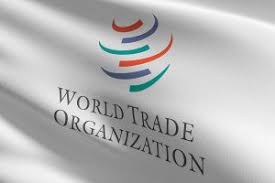
Pivotal Role of Trade Associations and Chambers in Global Trade: A Comprehensive Overview of Opportunities and Challenges
Introduction
Pivotal Role Of Trade Associations;
In the ever-evolving landscape of global trade, trade associations and chambers of commerce play a pivotal role in shaping economic policies, facilitating business growth, and fostering international relationships. These organizations serve as vital intermediaries between governments, businesses, and other stakeholders, offering a range of services and support that drive economic development and global trade expansion. This article delves into the multifaceted role of trade associations and chambers in global trade, highlighting their influence, functions, and contributions to the international business arena.
Trade associations and chambers of commerce have long stood as the unsung heroes of global trade, serving as vital catalysts for market access, policy advocacy, and business networking. In an era defined by rapid globalization, digital transformation, and fluctuating geopolitical landscapes, their importance has never been more pronounced. Whether you’re a small export-oriented enterprise or a multinational corporation seeking new frontiers, understanding the multifaceted roles these organizations play can mean the difference between seizing lucrative opportunities and falling victim to complex international challenges.
At their core, trade associations are industry-specific bodies formed by businesses that share common interests, sectors, or objectives. Chambers of commerce, by contrast, often encompass a broader membership base—ranging from local SMEs to large conglomerates—with the aim of promoting overall economic prosperity within a region or sector. Together, they offer a powerful combination of collective bargaining power, market intelligence, and policy influence. This comprehensive overview will explore how these institutions generate opportunities through advocacy, standardization, and networking, while also addressing the challenges they face—such as regulatory divergences, technological disruption, and member engagement in an increasingly digital world.
One of the most tangible benefits trade associations and chambers provide is policy advocacy. In many jurisdictions, fragmented regulations and abrupt policy shifts can create uncertainty for businesses entering foreign markets. By consolidating member voices, these organizations can engage with policymakers to shape trade agreements, negotiate tariff reductions, and streamline customs procedures. For instance, a well-organized chamber can lobby for mutual recognition agreements that reduce certification burdens, paving the way for faster market entry. This collective enterprise not only levels the playing field for smaller players but also ensures that large exporters maintain stability in their supply chains.
Beyond advocacy, these bodies are instrumental in standardization and certification. In sectors from agriculture to advanced manufacturing, compliance with international standards is a non-negotiable prerequisite for market acceptance. Trade associations often spearhead the development of best-practice guidelines and certification schemes, ensuring their members meet—and even exceed—global benchmarks. Through workshops, training programs, and certification services, associations help businesses navigate complex compliance landscapes, reducing the risk of costly rejections or legal disputes in target markets.
Networking is another cornerstone of their value proposition. Trade missions, trade fairs, and virtual matchmaking platforms organized by chambers of commerce and industry associations connect buyers, suppliers, regulators, and investors from diverse geographies. These events catalyze joint ventures, distribution partnerships, and technology transfers that would be difficult—and often prohibitively expensive—to arrange independently. Moreover, peer-to-peer knowledge sharing at these gatherings allows companies to exchange insights on market trends, consumer behavior, and emerging risks, fostering a more resilient and informed business community.
Market intelligence is equally critical. In a global environment characterized by rapid shifts—such as evolving consumer preferences, supply-chain disruptions, and emerging competitors—having access to reliable data and analysis can provide a decisive competitive advantage. Trade associations and chambers frequently publish market reports, economic forecasts, and regulatory updates tailored to specific industries and regions. By equipping members with actionable insights, they enable proactive strategic planning and risk mitigation, ensuring that businesses can pivot swiftly when confronted with unforeseen developments.
Yet, while the opportunities are substantial, navigating the ecosystem of trade associations and chambers is not without its hurdles. One of the primary challenges lies in regulatory heterogeneity. Different markets operate under distinct legal frameworks, intellectual property regimes, and environmental standards. For trade bodies, aligning the interests of members across jurisdictions can be a delicate balancing act. Achieving consensus on policy positions requires robust governance mechanisms, transparent decision-making processes, and a commitment to inclusivity—attributes that not all associations possess in equal measure.
Digital transformation presents both promise and predicament. On one hand, virtual platforms have democratized access to networking and learning opportunities, enabling associations to reach members in remote locations at minimal cost. On the other hand, replicating the depth of in-person engagement in a digital realm remains a persistent challenge. Associations must invest in sophisticated technologies—such as AI-driven matchmaking and immersive virtual-reality trade shows—to maintain member value, all while ensuring cybersecurity and data privacy in compliance with global standards like GDPR.
Member engagement itself can be a stumbling block, particularly for smaller businesses that may perceive association dues as an expense rather than an investment. Demonstrating clear return-on-investment through measurable outcomes—such as successful trade missions, policy wins, or direct business leads—is crucial. Associations increasingly rely on key performance indicators (KPIs), member satisfaction surveys, and case studies to showcase impact, justify membership fees, and attract new participants.
Lastly, shifting geopolitical and economic alliances can thrust trade associations into complex diplomatic territory. Sanctions, tariff wars, and political instability can strain relations between member countries, forcing associations to act as mediators or risk division. Maintaining neutrality and focusing on shared economic objectives, rather than nationalistic agendas, is essential to preserve cohesion and foster long-term collaboration.
In the chapters that follow, we will delve deeper into these opportunities and challenges, illustrating best practices through real-world case studies and offering strategic recommendations for businesses and association leaders alike. From unlocking new markets to safeguarding supply chains, the pivotal role of trade associations and chambers in global trade unpacks a dynamic landscape rich with potential. By understanding both the promise and the pitfalls, stakeholders can position themselves to not only survive but thrive in the interconnected global economy.
1. Facilitating International Trade and Business Development
Trade associations and chambers of commerce are instrumental in facilitating international trade by providing businesses with essential resources and support. They offer a platform for companies to connect with potential partners, clients, and investors across borders. Through networking events, trade missions, and business forums, these organizations help businesses explore new markets, identify opportunities, and build valuable relationships. By promoting trade and investment, trade associations and chambers contribute to the expansion of global trade and the growth of international business.
2. Advocacy and Policy Influence
One of the significant roles of trade associations and chambers in global trade is their advocacy and policy influence. These organizations represent the collective interests of their members, engaging with governments and policymakers to shape trade policies, regulations, and standards. By advocating for favorable trade agreements, reducing trade barriers, and addressing regulatory challenges, trade associations and chambers play a crucial role in creating a conducive environment for international trade. Their expertise and insights help ensure that trade policies align with the needs and priorities of businesses, fostering a more competitive and open global market.
3. Providing Industry Insights and Research
Trade associations and chambers are valuable sources of industry insights and research. They conduct market studies, gather data, and analyze trends that are crucial for businesses seeking to navigate the complexities of global trade. This information helps companies make informed decisions, identify emerging opportunities, and mitigate potential risks. By offering market intelligence, industry reports, and analytical tools, trade associations and chambers equip businesses with the knowledge needed to thrive in the global marketplace.
4. Offering Training and Development Opportunities
To enhance the capabilities of businesses and their workforce, trade associations and chambers offer a range of training and development opportunities. These programs include seminars, workshops, and certification courses designed to build skills and knowledge relevant to global trade. Topics covered may include international trade regulations, export-import procedures, cross-cultural communication, and supply chain management. By investing in training and development, trade associations and chambers help businesses stay competitive and adapt to the evolving demands of the global market.
5. Facilitating Networking and Partnerships
Networking is a fundamental aspect of global trade, and trade associations and chambers play a crucial role in facilitating these connections. They organize events such as trade shows, conferences, and business matchmaking sessions that bring together industry professionals, government officials, and potential business partners. These networking opportunities enable businesses to showcase their products and services, explore collaborative ventures, and establish strategic alliances. By fostering relationships and partnerships, trade associations and chambers contribute to the growth and diversification of global trade networks.
6. Supporting Small and Medium Enterprises (SMEs)
Small and medium enterprises (SMEs) often face unique challenges in accessing international markets. Trade associations and chambers provide tailored support to help SMEs overcome these challenges and succeed in global trade. This support includes offering export assistance, providing access to funding and grants, and facilitating market entry strategies. By empowering SMEs with the resources and guidance they need, trade associations and chambers help level the playing field and promote inclusive global trade.
7. Promoting Standards and Best Practices
Trade associations and chambers play a key role in promoting industry standards and best practices. They work to establish and maintain quality standards, ethical guidelines, and best practices that enhance the credibility and reliability of businesses in global trade. By advocating for consistent standards and practices, these organizations help ensure fair competition, protect consumers, and build trust in international trade relationships.
8. Enhancing Trade Facilitation and Logistics
Effective trade facilitation and logistics are critical for the smooth operation of global trade. Trade associations and chambers contribute to improving trade facilitation by addressing logistical challenges, streamlining customs procedures, and advocating for efficient transportation and infrastructure. They collaborate with governments and industry stakeholders to enhance the efficiency and effectiveness of trade processes, reducing costs and delays for businesses engaged in international trade.
9. Promoting Sustainable and Ethical Trade
In an increasingly interconnected world, sustainability and ethical practices are becoming essential considerations in global trade. Trade associations and chambers are at the forefront of promoting sustainable and ethical trade practices. They support initiatives aimed at reducing environmental impact, promoting fair labor practices, and encouraging corporate social responsibility. By advocating for responsible trade practices, these organizations contribute to the development of a more sustainable and equitable global trade system.
10. Building Global Trade Capacity
Trade associations and chambers play a vital role in building global trade capacity by supporting infrastructure development, enhancing regulatory frameworks, and fostering innovation. They collaborate with governments, international organizations, and industry leaders to create an environment conducive to global trade. By driving initiatives that enhance trade capacity, these organizations contribute to the growth and resilience of the global economy.
Conclusion
The role of trade associations and chambers in global trade is both diverse and significant. From facilitating business development and advocating for favorable trade policies to providing industry insights and supporting SMEs, these organizations are integral to the functioning and expansion of global trade. Their efforts in networking, training, and promoting standards contribute to a more dynamic and inclusive global trade environment. As businesses navigate the complexities of international markets, trade associations and chambers continue to be invaluable partners in driving growth, fostering innovation, and enhancing global trade connections.
As we reach the culmination of this comprehensive exploration into the pivotal role of trade associations and chambers in global trade, it becomes abundantly clear that these institutions are far more than mere conveners of industry gatherings. They are the architects of regulatory frameworks, champions of best practices, and engines of cross-border collaboration. The opportunities they unlock—from policy advocacy and market intelligence to networking and standardization—constitute powerful levers for businesses aiming to scale internationally. Yet, these benefits do not unfold automatically; realizing them requires strategic engagement, adaptive governance, and a willingness to invest in both human and technological capital.
First and foremost, policy advocacy remains the cornerstone of association value. By uniting firms under a common banner, these bodies can amplify collective voices to influence trade agreements, secure customs facilitation measures, and promote regulatory harmonization. Businesses that proactively participate in working groups and committees not only help shape policies that directly impact their operations but also gain early insights into upcoming regulatory shifts. This foresight is invaluable for aligning supply-chain strategies, ensuring compliance, and mitigating risks associated with sudden policy changes.
Equally critical is the pursuit of international standardization and certification. In many industries, adherence to global benchmarks—whether in quality management, environmental stewardship, or data security—serves as an entry ticket to premium markets. Trade associations, through their technical committees and certification programs, provide structured pathways for members to attain and maintain these standards. For companies, especially SMEs venturing beyond domestic borders, this guidance can translate directly into enhanced credibility, reduced compliance costs, and smoother market entry. By investing time and resources into these programs, businesses not only safeguard their reputation but also bolster trust among international partners and consumers.
Networking, the age-old yet ever-effective tool, has taken on new dimensions in today’s digital era. While face-to-face trade missions and exhibitions continue to facilitate high-impact relationships, virtual platforms now enable broader participation at a fraction of the cost. Forward-thinking associations blend both modalities—offering hybrid events that cater to diverse needs and geographies. Members who leverage these opportunities can forge joint ventures, co-development agreements, and distribution partnerships, often discovering synergies that would remain hidden in siloed, domestic operations.
Market intelligence, powered by data analytics and expert research, also stands as a linchpin for successful international expansion. Associations that invest in robust data-gathering mechanisms—surveys, member feedback loops, and AI-driven trend analysis—equip their constituencies with actionable insights. Armed with granular knowledge on consumer preferences, competitor movements, and regulatory amendments, businesses can pivot swiftly, optimize product offerings, and capitalize on emerging niches. In this context, being a passive member is tantamount to surrendering a competitive edge.
Despite these compelling advantages, challenges persist—and overcoming them demands intentional strategy. Regulatory heterogeneity remains a perennial obstacle. Associations must cultivate inclusive governance frameworks that balance diverse member interests, facilitating consensus while respecting regional nuances. Transparent decision-making, rotating leadership structures, and clear communication channels are essential to maintain trust and cohesion across borders.
Digital transformation, too, requires significant investment. Merely migrating existing events online is insufficient; associations must harness advanced technologies—such as AI for personalized matchmaking, blockchain for secure credentialing, and virtual reality for immersive trade shows—to deliver differentiated value. At the same time, robust cybersecurity measures and data-privacy protocols are non-negotiable to protect member information and comply with international legislation.
Member engagement challenges underscore the need for demonstrable ROI. Associations should implement clear KPIs—ranging from new business leads generated to policy outcomes secured—and report these metrics transparently. Case studies showcasing member successes serve as potent testimonials, while regular satisfaction surveys help tailor services to evolving needs. Ultimately, when businesses perceive membership dues as strategic investments rather than overhead, both retention and recruitment flourish.
Perhaps the most delicate challenge lies in navigating geopolitical volatility. Sanctions, trade wars, and shifting diplomatic alliances can test the neutrality and unity of trade bodies. Here, the guiding principle must be the pursuit of shared economic benefit over parochial interests. Associations that emphasize mutual growth, cross-cultural understanding, and conflict resolution mechanisms will weather political storms more effectively, preserving their role as trusted intermediaries.
Looking forward, the evolving landscape of global trade presents both new frontiers and fresh complexities. Sustainability and ESG (Environmental, Social, Governance) considerations are rapidly climbing corporate agendas, placing additional demands on trade bodies to integrate these principles into certification schemes, advocacy efforts, and best-practice guidelines. Meanwhile, emerging markets in Africa, Southeast Asia, and Latin America offer vast potential but require nuanced insights into local regulations, cultural norms, and consumer behaviors. Associations that expand their geographic footprint through strategic partnerships and digital outreach will be best positioned to capture these opportunities.
In conclusion, the pivotal role of trade associations and chambers of commerce in global trade is a tale of dynamic interplay between opportunity and challenge. For businesses—from nimble startups to global conglomerates—active participation in these bodies can unlock accelerated growth, reduced risk, and enhanced competitiveness. Yet, reaping these rewards demands more than mere membership; it requires strategic engagement, investment in digital capabilities, and a commitment to collective progress. As globalization continues to evolve, trade associations and chambers will remain indispensable architects of the rules, networks, and insights that define international commerce. Embracing their full potential today is the surest path to sustainable success in the interconnected markets of tomorrow.
Contact Us
For premier legal research services in International Trade law cases in Nigeria, contact Chaman Law Firm today. Our offices are conveniently located in Lagos, FCT Abuja, Ogun State, and the UK. We are readily available to assist you with your legal needs. Whether you require consultation, representation, or ongoing legal support, Chaman Law Firm is your trusted partner in navigating International Trade law in Nigeria.
Call us at 08065553671 or email us at info@chamanlawfirm.com to schedule a consultation.
- Corporate Insolvency
- Personal Bankruptcy
- Cross-Border Insolvency
- Debt Restructuring and Workouts
- Creditor Rights and Priorities
Chaman Law Firm: Your Trusted Legal Partner in International Trade Law
By choosing Chaman Law Firm, you are selecting a team of dedicated professionals committed to providing exceptional legal services tailored to your unique needs. Let us be your advocate and guide in the complex world of International Trade law, ensuring your interests are protected and your goals are achieved.


